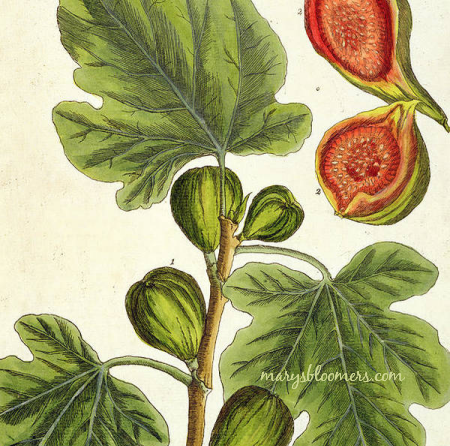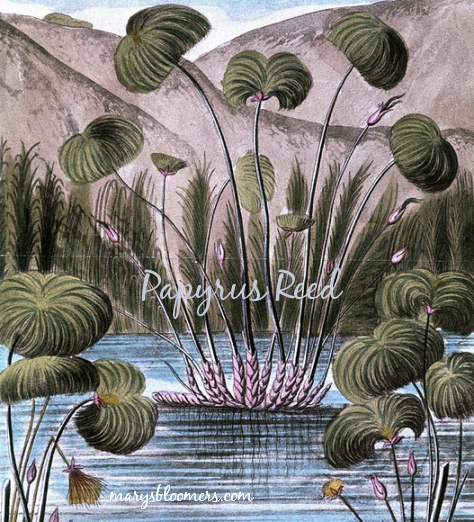Genesis
2:8 "Then the LORD
God planted a garden in Eden in the east,
|
|
Biblical theme gardens feature collections of plants that are named in the Bible Other
sacred garden themes are Mary Gardens and
Angel Gardens |
| A Biblical theme includes species
of plants mentioned in Jewish and Christian scriptures. Other plants
with associations to the themes and subjects of the Bible are sometimes
also included, especially in areas with different climates.
Plants in a Biblical garden are almost all symbolic. Some public gardens exhibit objects in order to illustrate Biblical stories or to demonstrate how people lived in Biblical times. I would use patron saints, like St. Francis, St. Fiacre, and angel statues as a base for my design. I would also concentrate mostly on an Old Testament garden, as my preference. My theme would include lots of fruits and berries, herbs, and of course, a grapevine on an arch, a fig and dwarf cypress tree in pots. Florals weren't a feature, but lots of herbs are necessary. Mostly medicinal, and those featured in religioius ceremonies. Some fruits, like grapevines, have pretty flowers... Some
of the plants mentioned in
the Bible |
| The fig is the first plant
mentioned in the Bible.
The common Fig Tree - Fresh figs were favored as first fruits. Figs dry very well and were stored as cakes for future use. Another kind of fig tree, the sycamore, grew in Egypt and in the warmer areas of the Holy Land.
Endive, chicory and dandelion may have been the bitter herbs of Exodus. The pomegranate was a symbol embroidered on the robes of Rabbis Cedar was used to line the Temple of Solomon and build the Ark of the Covenant Common and Papyrus reed - grows in shallow water in hot places. Stems were used for rafts and for making baskets and paper, upon which much of the Bible may have been written..
Cattail reed seems to be the one among which Moses was hidden . Also called bullrush. Cassia and cinnamon. The ground bark was used in the holy anointing oil for priests and cinnamon was used for perfumery Calamus used for perfume. Galbanum is a resin burnt as incense and it was obtained from the stem of a relative of parsley growing on dry hills in Iran. Henna leaves were crushed and used both as a perfume and as a yellow dye for skin, nails, and hair. It is a subtropical shrub with white flowers. Hyssop was used for ritual cleansing and the sprinkling of blood in the tabernacle, and is related to mint. Myrtle is a shrub with fragrant leaves and white flowers. It was especially favored for temporary shelters in the fields at the Feast of Tabernacles
Rue grows on the hills of the Holy Land as a
low straggling shrub with pungent smelling leaves. Bitter herbs for Passover are certain wild plants with sharp-tasting leaves. The desert plant Artemisia was also bitter and depicted sorrow and suffering Coriander provided both salad leaves and spicy seeds, which were likened by the Israelites to the "manna in the desert". Cumin and dill, like coriander, are members of the parsley family with spicy seeds.
Mint was tithed by Jewish leaders Saffron, a yellow powder prepared from the stigmas, is used as a subtle flavor and also as a food coloring and a medicine. Frankincense is a white or colorless resin yielded by several species of Boswellia. The resin is obtained by cutting the branches and collecting the exuding Ďtearsí which are burnt as incense in religious rites or as a personal fumigant. In the Bible, frankincense was prescribed for holy incense mixture. IIt was also brought by the wise men to the infant Jesus, together with gold and myrrh Myrr is a reddish resin obtained from a spiny shrub in a similar manner to frankincense. This resin was dissolved in oil and either eaten or used as a medicine and cosmetically. Balm is a general term for medicinal ointment prepared from resin-bearing plants. The balm of Gilead. Gum was imported with balm by the Ishmaelites. It is extruded from cut roots of Astragalus grown on dry Iranian hillsides. Some plants, such as the gourd Citrullus colocynthis, could be medicinal purges in very small quantities but bitter poisons otherwise Olive Trees are small, rounded orchard trees with narrow gray-green leaves and small cream-colored flowers in May. The bulk of the crop was gathered for olive oil.
Grapevines were grown either in vineyards or singly as shady bowers around houses and courtyards. Short flower heads grow among the new leaves in early summer, and the numerous tiny flowers develop into a cluster of round sweet grapes which ripened either as green or black fruits. The fruits are eaten fresh, or dried and stored as raisins. Wine was prepared from the fermented juice. Pomegranate bushes were often grown in gardens and beside houses. Moses was instructed to embroider pomegranate fruits on the hem of the priestsí robes and their form ornamented the columns of Solomonís Temple in Jerusalem.
Date Palm. Jericho was known as the city of palm trees. The wandering Israelites reached Elim where there were seventy palm trees The most important biblical nut was Almond. Almond nuts were carried to Egypt by Josephís brothers. Aaronís walking stick budded and produced Almonds overnight and proved that Aaron was Godís man to assist Moses. Several species of Acacia trees occur in Sinai. Their timber was used for the construction of the tabernacle, the tent of meeting. Acacias are usually flat-topped trees which possess strong thorns. Oleander is a shrub with long, narrow poisonous evergreen leaves and beautiful pink flowers in summer. Although it may be found in stream beds in dry country, it is also in the marshes and streams such as those of Mount Carmel.. Poplar grew beside water, especially the rivers
Euphrates and Jordan. Cypress- The famous cedar of Lebanon, grew in extensive coniferous forests . The flat-topped trees provided excellent timber which was used to build Davidís house and Solomonís Temple. Sandalwood was imported from Ophir to Judah by Hiramís fleet for Solomon. Used for perfumes and incense. Oak- The deciduous oak still forms woodland on some hills of Palestine, such as Carmel, Naphtali, and Bashan. Oaks were used to mark graves and for ceremonies. Pine, especially the Aleppo pine. Its timber was used for construction. Biblical Herbs for your garden:
Chives and Garlic
Cilantro/Coriander - The Israelites called this food manna, meaning Ďfood from Heavení Dill Fennel Mint - The white flowers of peppermint attract pollinators. Mint was tithed by Jewish leaders
Visit
this page to
learn about designing a sacred Mary Garden The Library My
suggestions for Beautiful Angels, Patron Saints and Decor
For Your Biblical and Sacred Garden.
Content, graphics and
website design ©2020 Mary's Bloomers This
site uses Watermarkly
Read more at Gardening Know How: Biblical Garden Design: Tips For
Creating A Biblical Garden https://www.gardeningknowhow.com/special/spaces/biblical-garden-design.ht
|




















